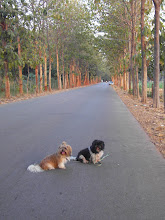Thailand’s Royal Barge Procession
History of Thailand’s Royal Barge Procession
This legendary procession seems to have originated in the capital of Sukhothai kingdom, probably as in the 13th century. But during the war which brought about the fall of
When King Rama I ascended the throne in 1782, to become the first king of the present Chakri Dynasty, he considered the renewal of national arts and craft and maintenance of tradition, an early. This included construction of new royal barges. So the royal barge procession survives and has occasionally been performed since then up to today.
Type of the Royal Barges ceremony
1.1 The Royal Barge Suphannahong ("the Golden Swan" or the "
om her mouth. This 46 meter craft was carved from a single trunk of teakwood, and was launched November 13, 1911. There is a golden pavilion on board to house the King and his Royal family. The World Ship Trust, in 1992, awarded the Royal Barge Suphannahong as a Maritime World Heritage.
1.2 The Royal Barge Anantanakkharat
was buit during the reign of Rama III (King Nangklao).The bow is carved into rhe 7-headed Nakkharat, the mystical snake-like creature, in gold lactuer and glass jewels.
1.3 The Royal Barge Anekkachatphuchong ("the Variety of Serpents") is the oldest of the four Royal barges, being the actual barge built during the reign of Rama V (King Chulalongkorn). While no mystical figure is readily visible on the bow, numerous small ornamental Naga figures are carved into the bow.
1.4 The Royal Barge Narai Song Suban Ratchakan Thi Kao or The Royal Barge Narai Song Suban HM King Rama IX ("God Narayana on his carrier, Garuda") is the only barge built during the reign of Bhumipol Adulyadej, who laid the keel in 1994, it was built under commission by the Royal Thai Navy and the Thai Department of Fine Arts and was launched May 6, 1996 to coincide with the celebration of Bhumibol Adulyadej's Fiftieth Anniversary of his accession to the throne.
2. The Escrot Barges
2.1 The Krut or garuda class barge with the garuda, Vishnu's steed, in flight on the bow.
2.2 The Ekachai class barge with the horn of a mythical horned dragon or hera on the bow. The dragon's head and body are painted on the hull of the barge. The Ekachai class is the only type of royal escort barge that does not have a cannon on the bow.
Organization
Major and the Minor. The Major formation, also known as the Major Battle Formation (Petch Phuang Major Battle Formation) dates from the time of King Narai. This formation is used for the more significant events, such as The Royal Kathin Ceremony, movement of the sacred image of Buddha, or important occasions of state. The Petch Phuang Formation is arranged into five columns, with the Royal Barges in the center, and two rows of war barges on each side. In the Minor formation, there are three columns, the Royal Barges in the middle, and a single row on each side.
The Route of the Royal barge Procession
The procession vessel has started in area of Tha Wasukri where it parks the Royal barge from the front of
References
http://www.thailandmuseum.com/thaimuseum_eng/royalbarges/history.html
http://en.wikipedia.org/wiki/Royal_Barge_Procession
Members
Kanlachan Itthipatachai 513081011-9 Spanish Major.
Sarayut Sirichan 513081017-7 Spanish Major.

Wow, I can't sleep this night after i read your story.
ReplyDeleteIt's very interesting :D
SADED